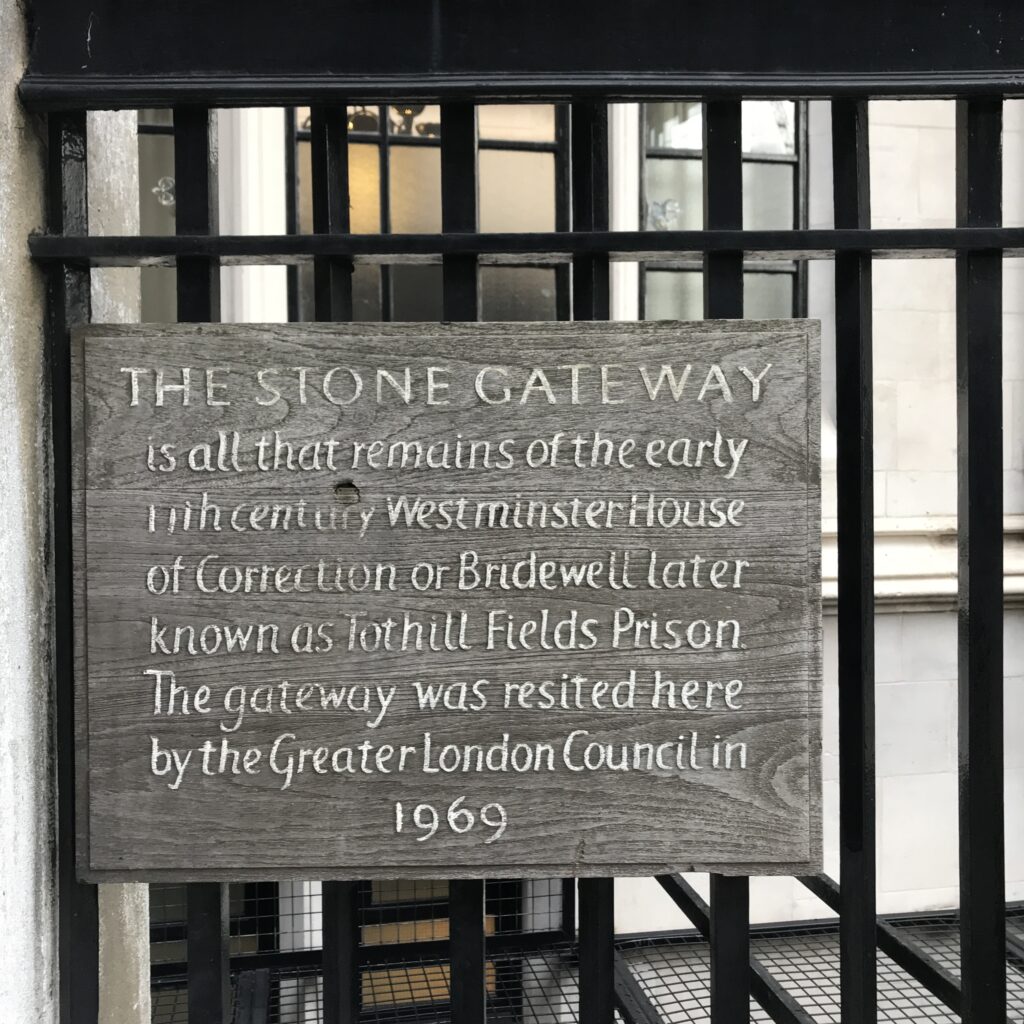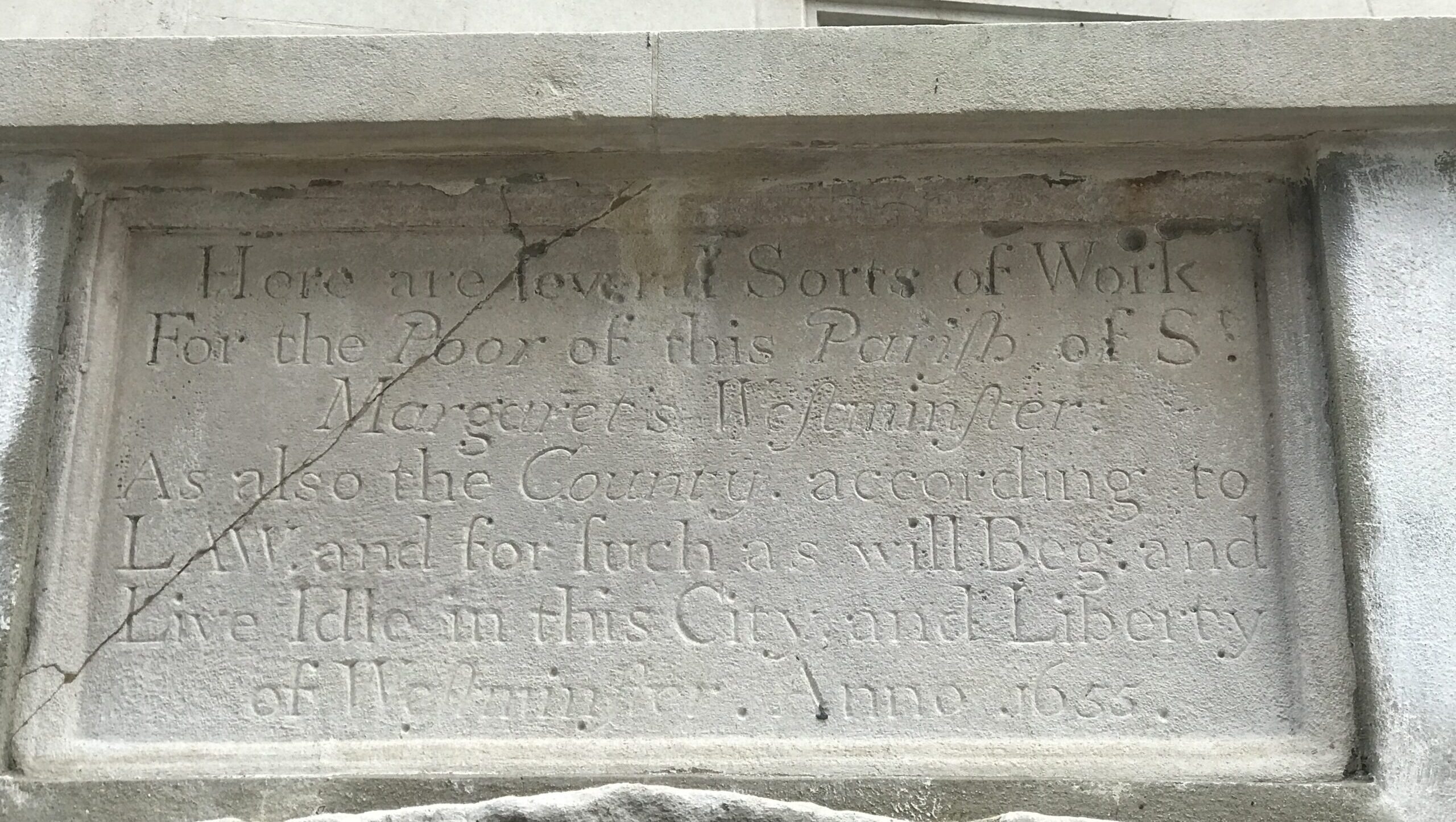
On the south west corner of Parliament Square, directly over the road from Westminster Abbey, is the Supreme Court building. The final court of appeal for the UK, the twelve justices sit in what was once the Middlesex Guildhall.
The current building is the third such Guildhall on the site, and was designed by the architect James Glen Sivewright Gibson, in a style described as “art nouveau gothic” (!), and has statues and sculptural friezes by Henry Charles Fehr.
As the home of the Supreme Court, the building keeps alive a link with the process of justice, because one of the uses of the Guildhall was as a Sessions House, where criminal trials were held each quarter, and the legacy of this can be seen in two places at the back of the building.
The first is Fehr’s sculpture over the rear doorway. This, I assume, was the entrance for prisoners/defendants as above the doorway is a sculpture of Justice, blindfolded to show she is not influenced by any external factors and will mediate impartially. She holds a lamp rather than the traditional scales, perhaps to suggest the illumination of what’s hidden; the truth to be revealed. Flanking the entrance are two smaller figures: Reason, resolute and thoughtful, and holding a sword, and Passion, entwined with vines of passion flowers. Presumably the sword of reason cuts through the wildness of passion and the truth is freed.
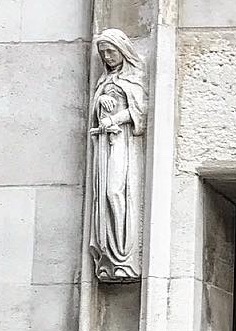
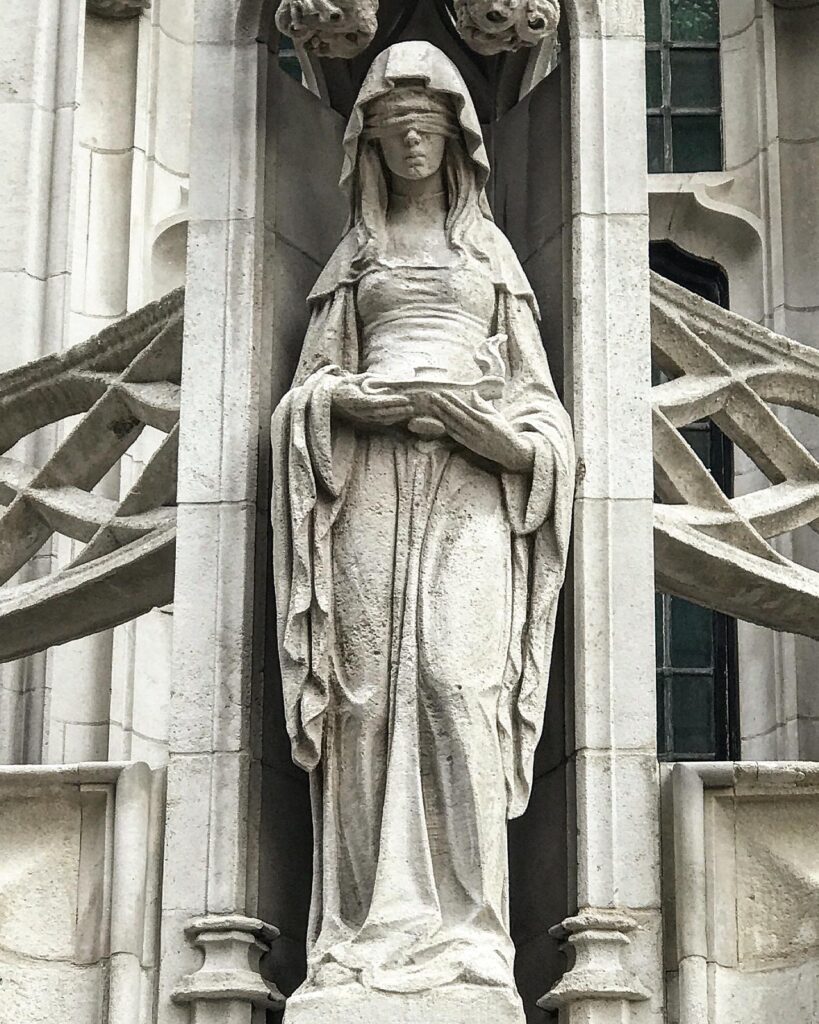

The street running along the back of the Guildhall is called Little Sanctuary, (another nod to the past as within the bounds of the sanctuary of the Abbey, fugitives were immune from arrest by the civil authorities) and a little further along the building is another doorway, a transplant from a much older building some half a mile away.
This is the old entrance to the Tothill (later the Westminster) House of Correction. In the 1830s a new prison was built close to the present site of Westminster Cathedral, but this stone doorway is from its predecessor, an institution that stood where today one would find Greencoat Place.

That name is significant as it reflects the Greencoat school, and institution that operated in Westminster from 1633 as ‘a hospital* for the relief of the poor fatherless children of (the parish of) St Margaret’s Westminster’.
(*hospital here in its older meaning as an almshouse or hostel, rather than a place where the sick were treated)
The companion institution of this hospital was the Tothill House of Correction, a Bridewell for “such as will beg and live idle in this city”. This is the 17th century version of the Victorian workhouse, where the ‘indolent’ (the ‘undeserving poor’) would be given charity only in return for work (“Here are several Sorts of Work for the Poor of this Parish of St Margaret’s Westminster” says the stone notice dated 1655 that was above the door).
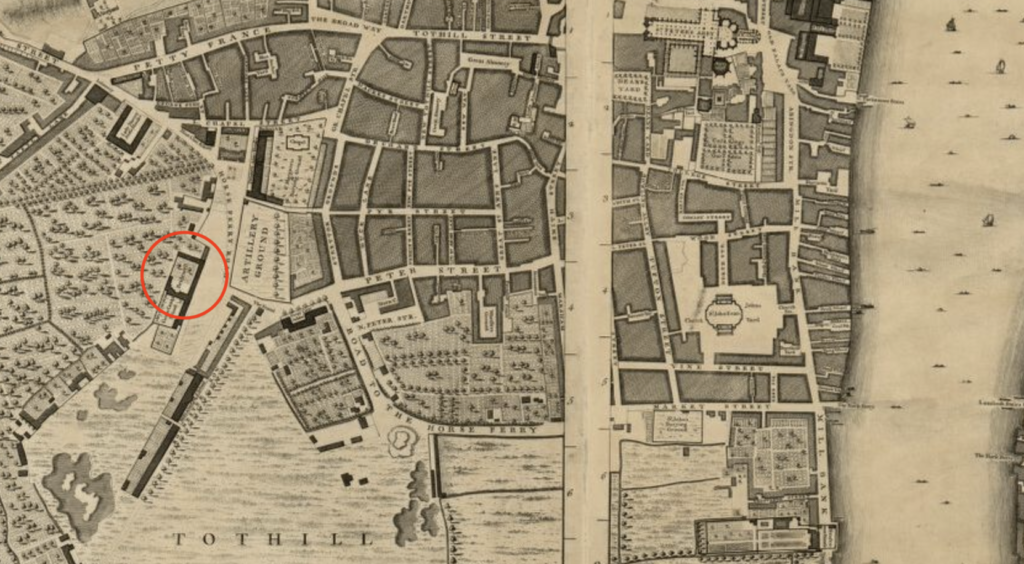
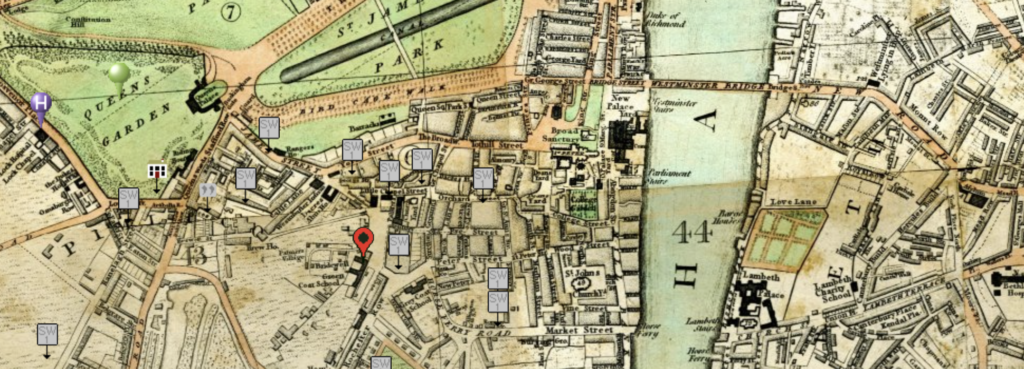
In the reign of Queen Anne the Bridewell becomes a general prison, and the building was closed and then demolished after the opening of the new gaol (which, in turn, was closed in 1877 and demolished in 1885).
I can’t find how the 17th century door found its way to the Guildhall. Wikipedia tells me it was installed in the basement of the building, but doesn’t say when – there are well over 70 years between the closing of the original House of Correction and the construction of Gibson’s building, so perhaps it was in one of the earlier iterations of the Guildhall. What we do know (because there is painted wooden sign that tells us) is that the gateway was moved to its present location by the GLC in 1969.
